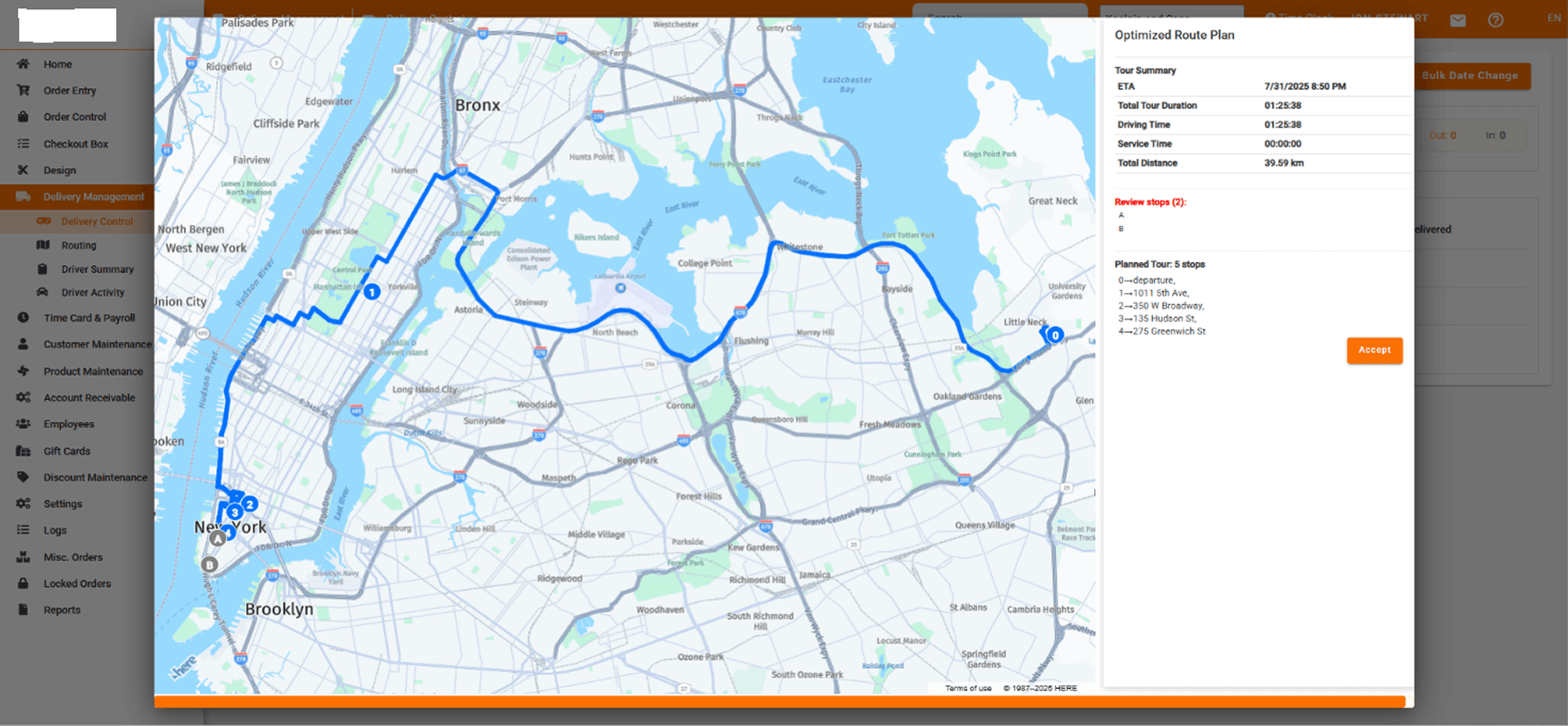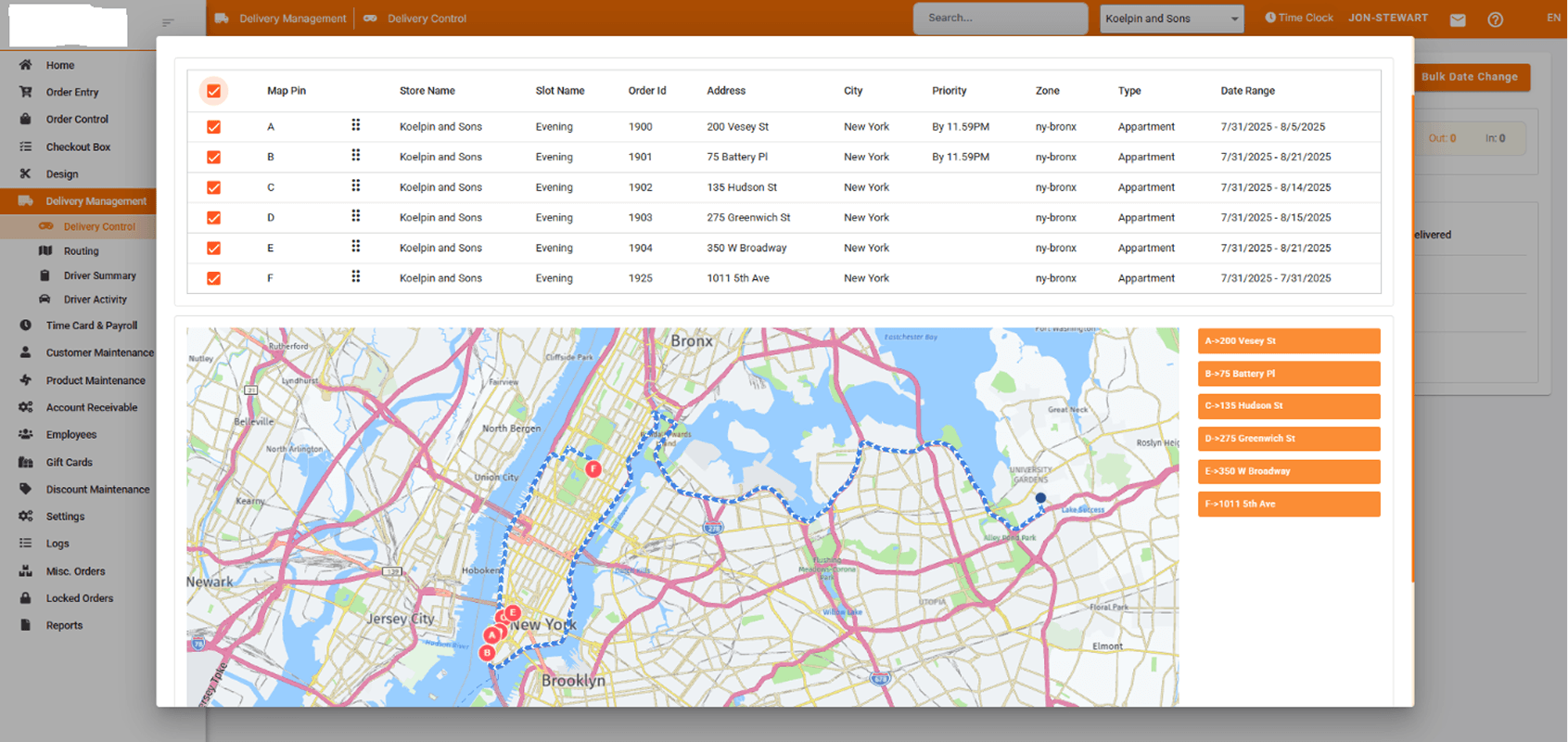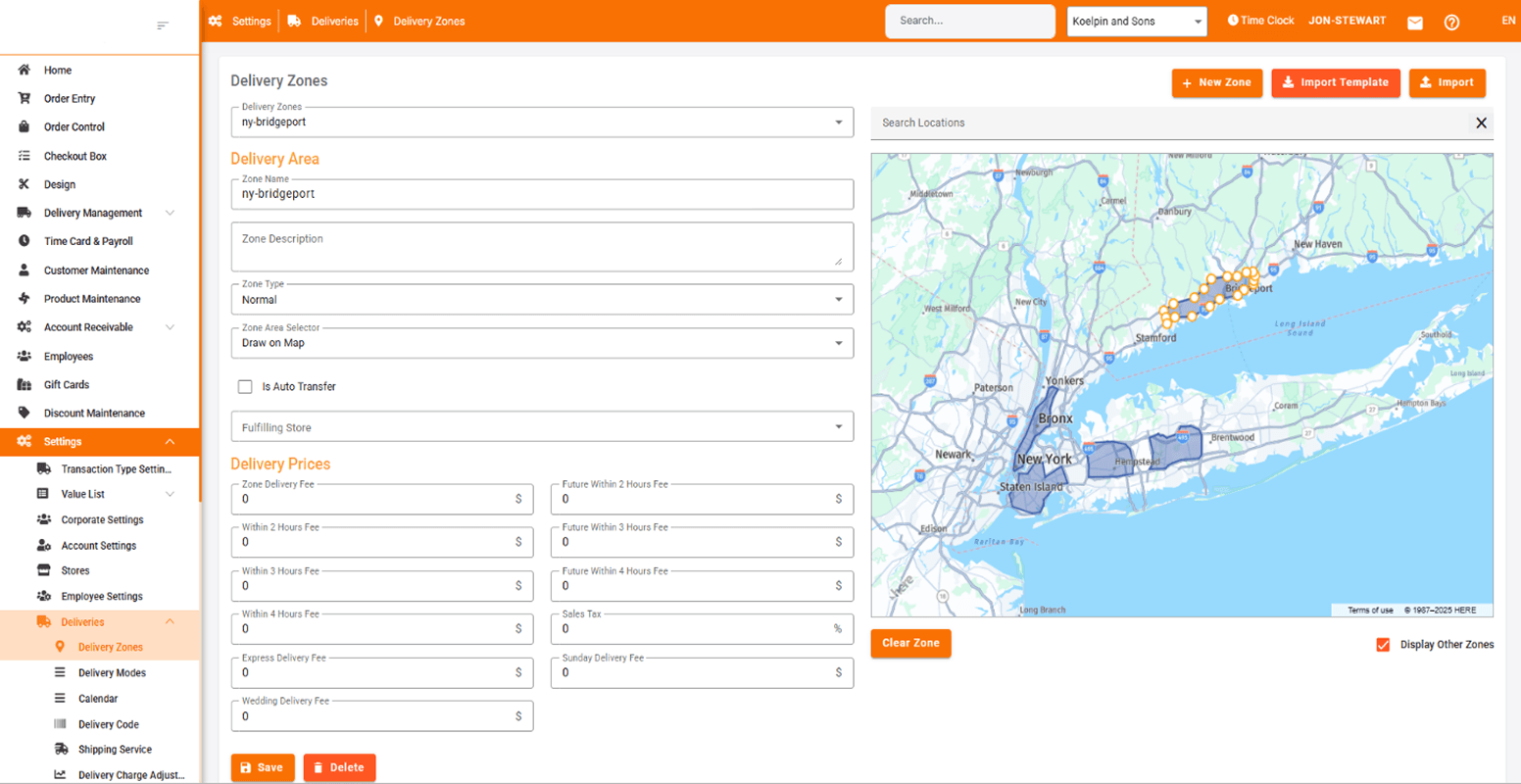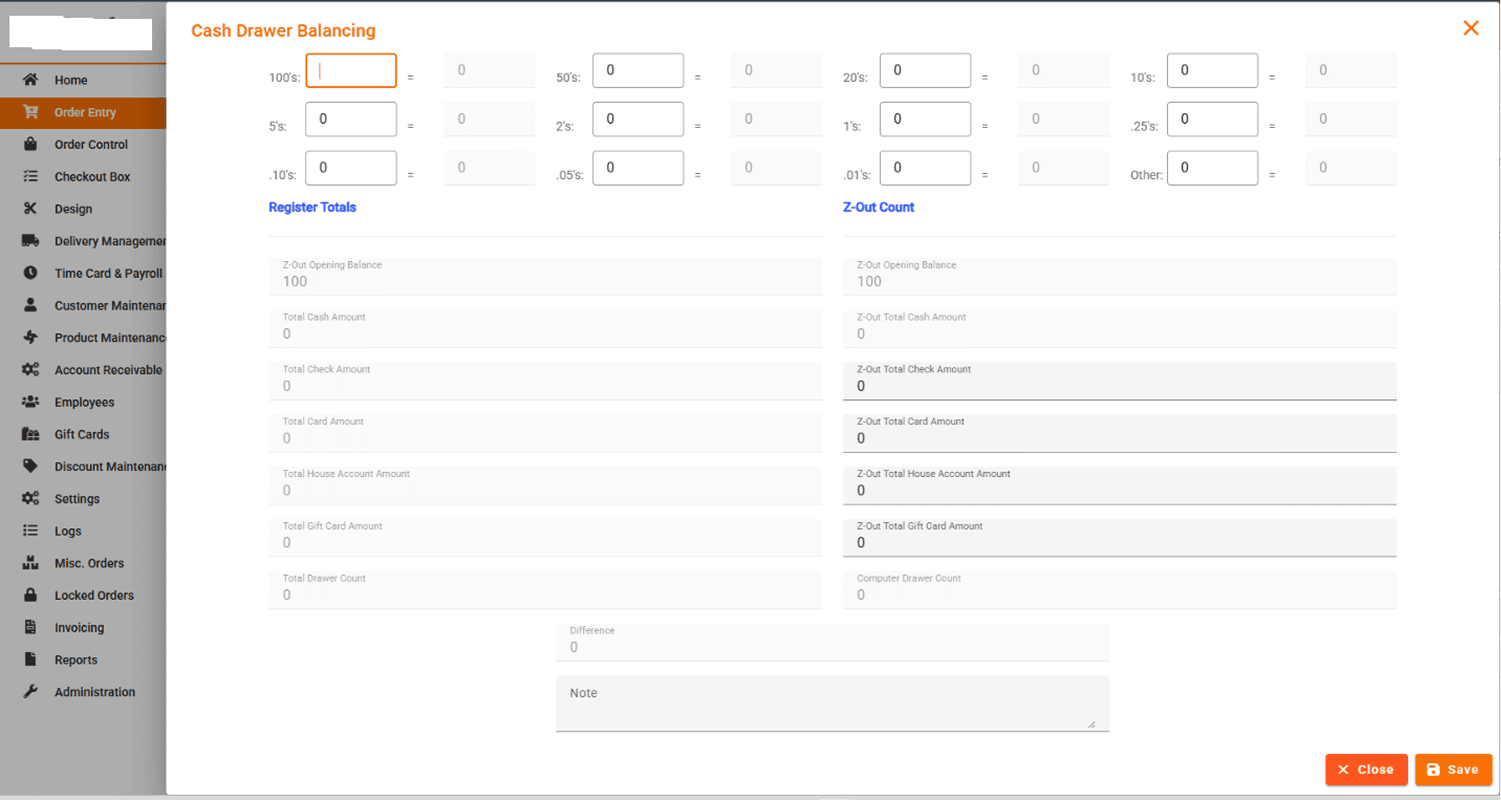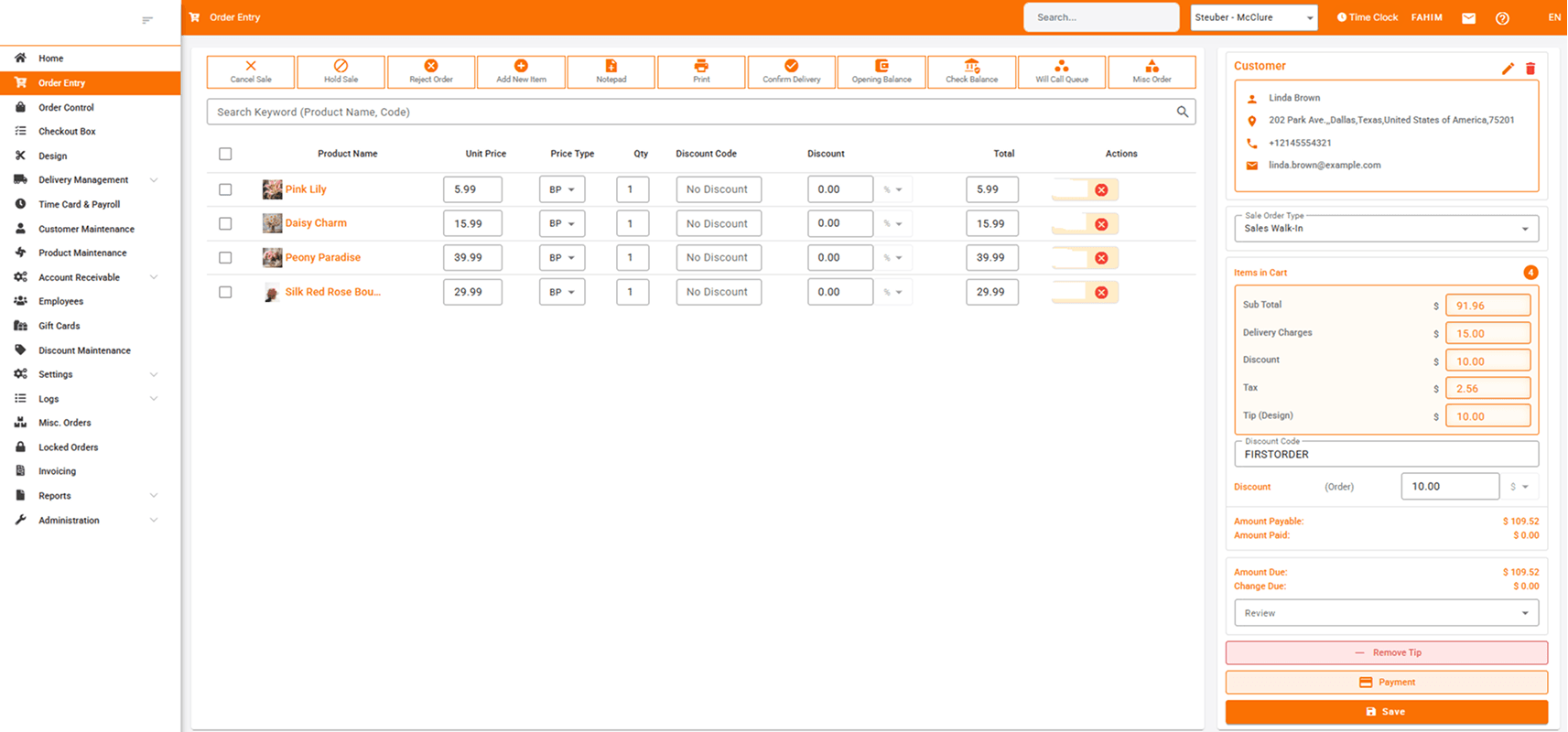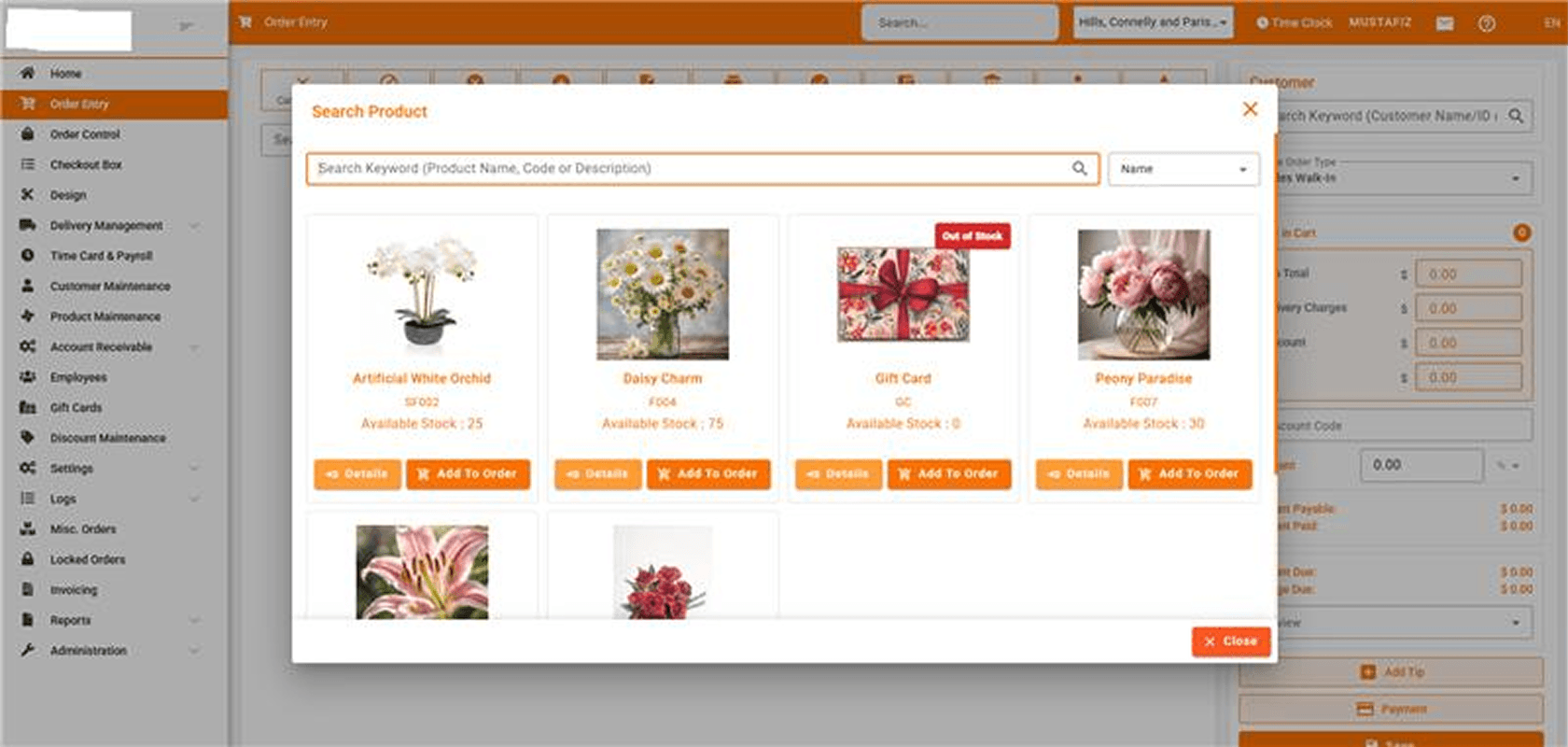

The company initially built a legacy console-based platform tailored for the flower industry. Its purpose was to manage core business processes for florists, including POS operations, customer and order management, delivery tracking, accounting, reporting, and integrations with payment gateways, maps, and wire services. Over time, the platform struggled to keep pace with modern demands, highlighting the need for a scalable, flexible, and user-friendly solution to support both current and future growth.

From the beginning, the platform presented serious usability and scalability issues. The subscription and onboarding process was lengthy and fully manual, leaving customers waiting days before the system became operational. The outdated console interface created a frustrating user experience with poor navigation and slow workflows.
On the technical side, the tightly coupled and outdated codebase made it difficult to maintain, extend, or adapt to changing business requirements. Integration capabilities were minimal, lacking proper support for advanced payment systems, modern accounting tools, and real-time delivery management. Inefficient delivery routing and the absence of real-time tracking further limited operational transparency and customer satisfaction. Altogether, these limitations hindered scalability, slowed development, and reduced competitiveness.
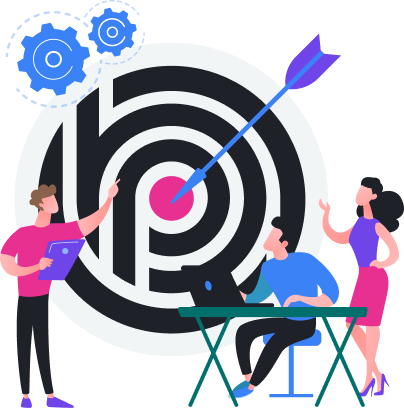
To modernize the platform, the company adopted the ABP Framework, leveraging its modular, enterprise-grade architecture to transform the system into a scalable SaaS solution. ABP’s built-in multi-tenancy was a perfect fit for their subscription-based business model, allowing each tenant to operate in isolated and secure environments.
Key ABP features such as identity management, role-based permissions, and auditing accelerated delivery by eliminating the need to develop these components from scratch. Combined with its adherence to Domain-Driven Design, the framework ensured long-term maintainability and adaptability.
The new platform was built on .NET 8 with ABP Framework v8.2, Angular 17 for a responsive SPA frontend, and Azure services for deployment, database, and storage. SignalR enabled real-time delivery tracking, while performance optimizations such as API caching and asynchronous background jobs improved responsiveness. This architecture provided a secure, scalable, and future-ready foundation for the company’s SaaS growth.

Since adopting ABP, the company has achieved significant efficiency and performance gains. Development cycles are now 25–30% shorter thanks to ABP’s modular structure and out-of-the-box enterprise features. Multi-tenancy reduced the time needed to onboard new customers by up to 50%, while performance optimizations yielded 30–35% faster system responsiveness.
The improved UI, real-time delivery tracking, and seamless integrations elevated both customer satisfaction and operational transparency. Security and compliance also improved through integrated identity management, role-based access control, and detailed audit logging.
Overall, the ABP Framework enabled the company to modernize its legacy system into a high-performance, secure, and scalable SaaS platform. It not only streamlined development and operations but also strengthened the company’s market position and customer satisfaction, allowing the team to focus more on business innovation and less on technical debt.
